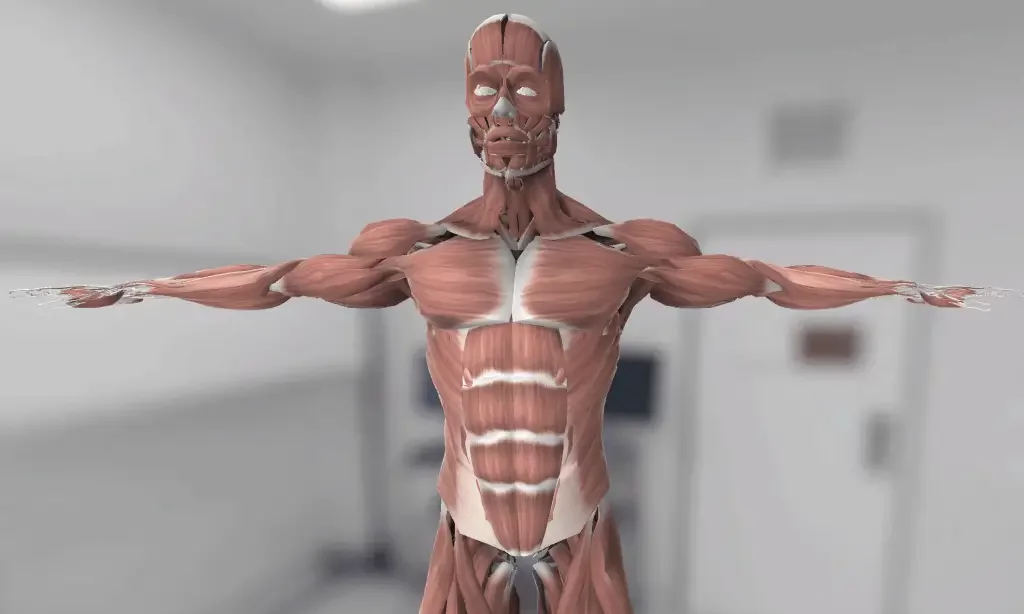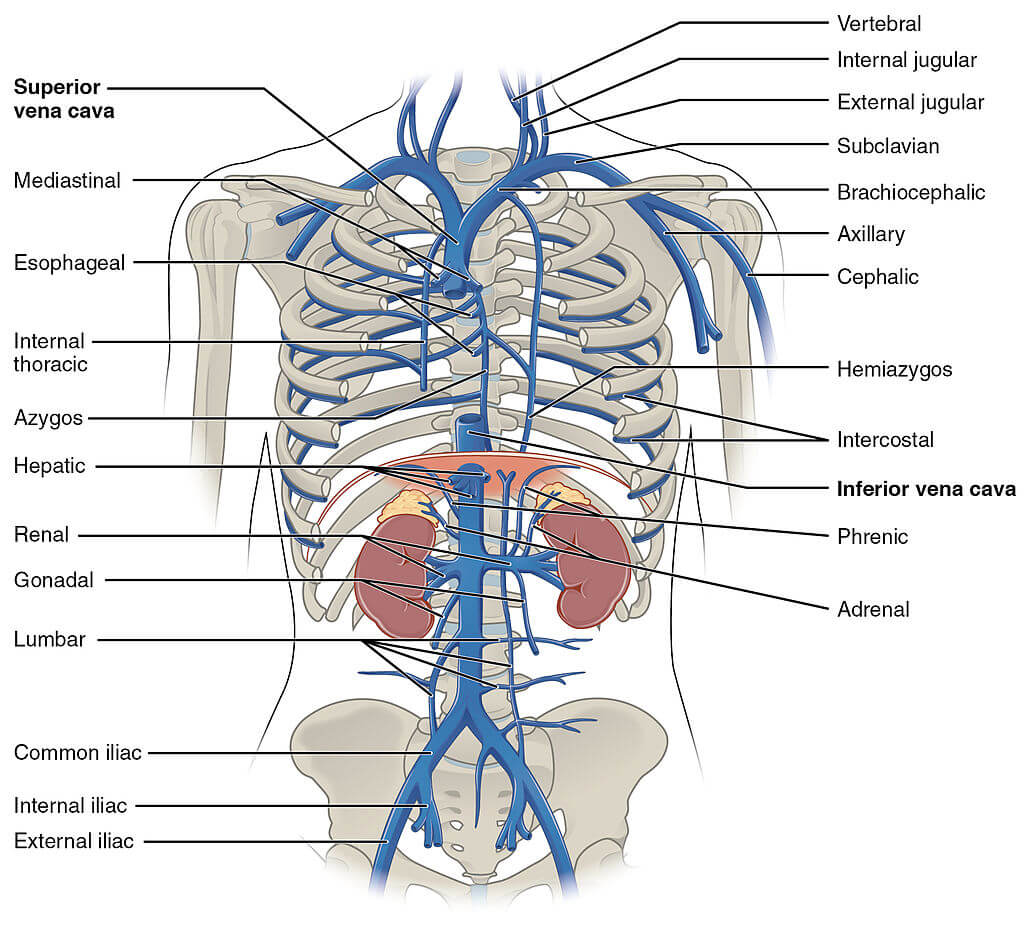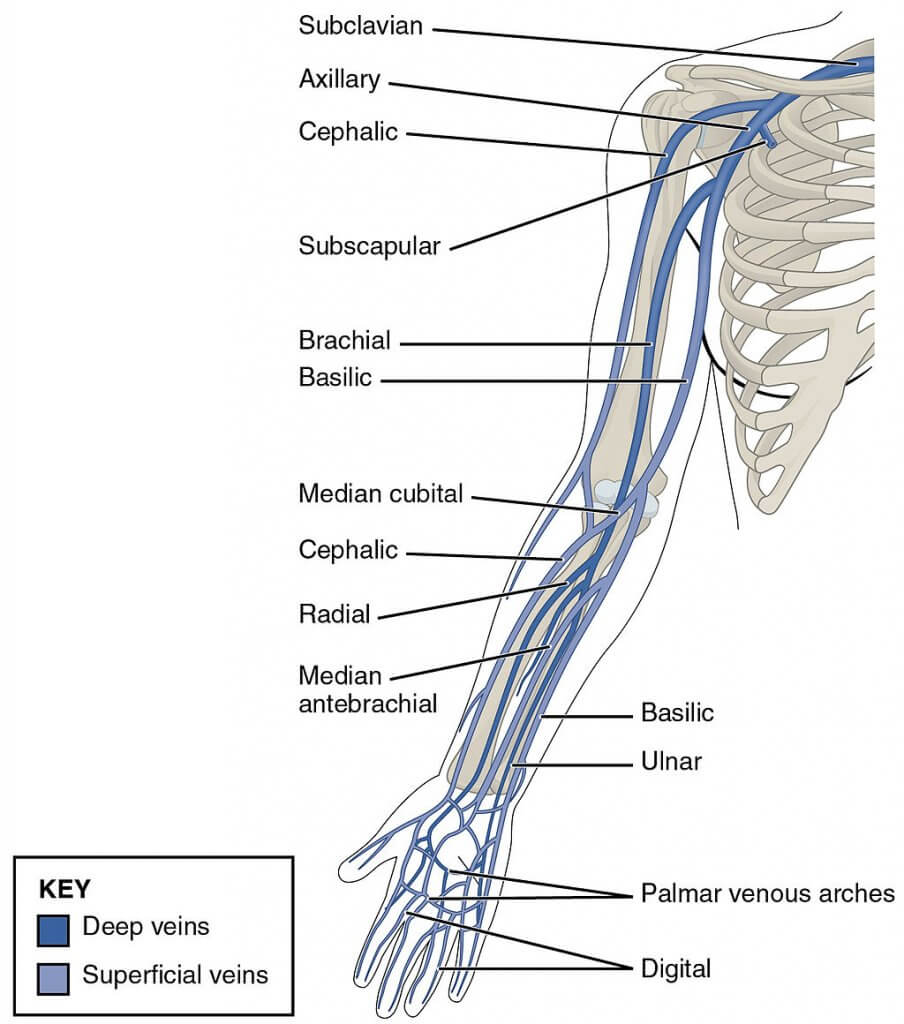3D Anatomy Model
Add another dimension to your learning with fully-interactive educational male and female anatomical models.
Learning about the human anatomy has never been more fun!
Purchase
Drainage of blood from different body parts is a very crucial process for the optimal functioning of our body. Blood draining via different veins carries waste, nutrients (in the hepatic portal vein), and excretory products that need to be excreted from the body, for example, carbon dioxide (CO2).
There are two main veins draining the upper limb (the arms and shoulder girdle). These are namely the cephalic vein and the basilic vein. Cephalic refers to the anatomy of the head, hence the name of this vein as it courses upwards towards the shoulder.
The cephalic vein lies superficially (close to the skin) and stays in the superficial for most of its course. It is easily visible in a lot of people, especially in leaner individuals. The cephalic vein drains the part of the hand, forearm, and arm that is farthest from the body (ie. away from an imaginary midline dividing the body into two halves).
Its counterpart, the basilic vein drains the medial (towards the midline) part of the hand, forearm, and arm. Both the cephalic and basilic veins contain flap valves that prevent the backflow of blood due to lower venous pressure. As for most of the superficial veins of the body, the cephalic vein is often used to take blood samples for different blood tests.
Let’s have a look at the cephalic vein in 3D, AR, and VR!

The cephalic vein starts at the radial side of the hand (the part of the hand containing the thumb). It arises in an area known as the anatomical snuff box, runs superficial to the radius, and continues upwards, superficially in the forearm. At the level of the elbow, the cephalic vein communicates with the basilic vein which lies on the opposite side of the forearm. The median cubital vein serves as the communicating vein and lies in the cubital fossa (the depression on the anterior side of the elbow). The median cubital is routinely used for blood assessment samples.
The cephalic vein then runs between the brachioradialis muscle and the biceps brachii muscle of the arm. As mentioned earlier the vein stays in the superficial fascia on its course towards the head and neck. Finally, the vein then courses between the major muscles of the chest and shoulder; the pectoralis major (chest pec) muscle, and the deltoid (shoulder) muscle respectively. The cephalic vein, in this region, is accompanied by the cephalic artery.
Accessory cephalic veins and median cubital vein drain into the cephalic vein below the elbow. The accessory cephalic veins can arise from the venous plexus of the front of the forearm or the venous network of the front of the hand.
The cephalic vein drains into the axillary vein.

The cephalic vein is used as an alternate route to access the central venous system i.e., superior vena cava, pulmonary artery, etc. It is also used in the placement of percutaneous pacemakers and venous catheters.
The cephalic vein is an easily visible site for blood access and is also known as the Houseman’s friend.
When the blood coursing through the veins has low pressure, the veins get engorged with blood sometimes. This can happen due to inefficient flap valves present in the veins that prevent the backflow and pooling of blood. Also, long periods of inactivity can cause veins to become engorged with blood and tortuous, leading to varicose veins.
A thrombus is defined as a blood clot that forms in the vessels and remains there. These thrombi can sometimes block the blood flow through the cephalic vein. They can be caused by a pre-existing history of varicose veins.
Abnormal compression of the cephalic vein in the region where it passes between the chest and shoulder muscles is known as cephalic arch stenosis. It can be caused by external pressure on the valves present in the cephalic vein. Cephalic arch stenosis is treated by the placement of a stent in the stenotic region. It is often hard to treat.
Phlebitis refers to the inflammation of a vein. It can occur in the cephalic vein during or after the process of taking blood samples. The formation of a thrombus in the affected area is known as thrombophlebitis.
The content shared on the Health Literacy Hub website is provided for informational purposes only and it is not intended to replace advice, diagnosis, or treatment offered by qualified medical professionals in your State or Country. Readers are encouraged to confirm the information provided with other sources and to seek the advice of a qualified medical practitioner with any question they may have regarding their health. The Health Literacy Hub is not liable for any direct or indirect consequence arising from the application of the material provided.
